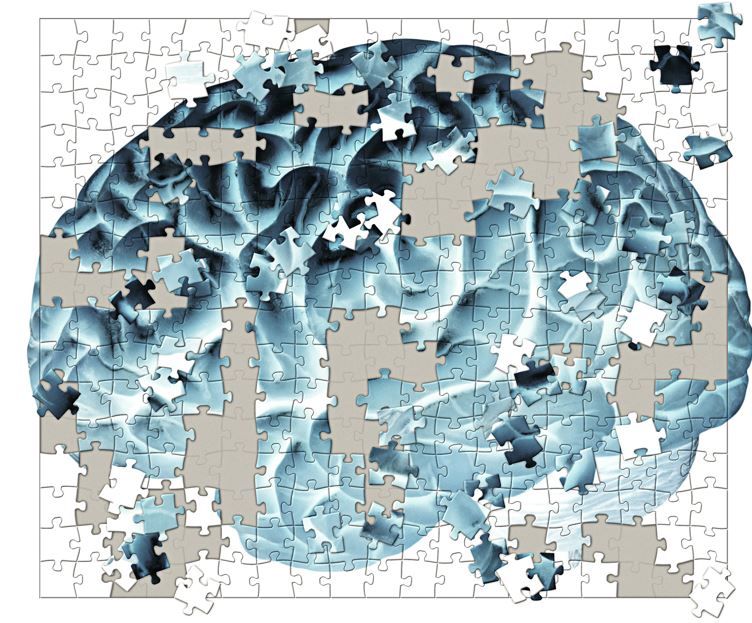New Biomarkers Identified for Early Detection of Alzheimer Disease
Phospho-tau serine-262 and serine-356 were identified as biomarkers for early Alzheimer disease detection in a new study published in Nature Medicine.
©Visualmind/AdobeStock

New research published in Nature Medicine has identified key biomarkers associated with soluble tau assemblies (STAs) that may enhance early diagnosis and treatment strategies for Alzheimer disease (AD).1
The findings could provide a more sensitive method for detecting tau pathology before the formation of neurofibrillary tangles (NFTs), which are characteristic of advanced AD, according to a team of researchers from the University of Pittsburgh and the University of Gothenburg in Sweden.1
“In our study, we look at how tau is modified, which leads it to form its soluble clumps. We found that changes in two specific amino acids, serine-262 and serine-356, happen before these thread-like fibrils start to form in the nerve cells,” lead author Tohidul Islam, PhD, researcher at the University of Gothenburg's Sahlgrenska Academy, said in a press release.2
Islam and colleagues aimed to fill a significant gap in the understanding of early-stage tau aggregation in people with AD. While NFTs are well-established indicators of AD severity, this research focuses on STAs—intermediate soluble forms of tau protein that precede tangles and are believed to be neurotoxic. Understanding and identifying these early forms of tau could lead to improved therapeutic interventions and diagnostic tools, according to the study published online February 10, 2025.1
Investigators employed a combination of advanced techniques involving human postmortem brain tissue from autopsy-verified AD cases. They utilized a fluorescence resonance energy transfer (FRET) assay to quantify STAs in frontal gray matter tissues, comparing samples from patients with AD against those with other tauopathies such as progressive supranuclear palsy and corticobasal degeneration.1
Investigators also developed a new CSF biomarker test capable of distinguishing STAs from other tau assemblies. The test utilized a single-molecule assay platform, employing monoclonal antibodies tau368 and CT23.1 for capture and detection, respectively. This assay measured both STA and total tau (t-tau), calculating a ratio to improve diagnostic accuracy.1
The team conducted extensive immunohistochemical analyses to identify tau phosphorylation sites, specifically p-tau serine-262 and p-tau serine-356, which were found to be integral to the STA core region. Additionally, the study involved mass spectrometry for peptide characterization, providing a comprehensive biochemical assessment of tau forms present in the brain and CSF.1
Results
The findings revealed that levels of STAs, particularly those phosphorylated at serine-262 and serine-356, were significantly elevated in AD cases compared to controls and other tauopathies. Specifically, the signal was approximately 300-fold higher in patients with AD than in unaffected individuals, underscoring the assay's potential as a diagnostic tool.1
“Amyloid-beta is a kindling, and tau is a matchstick. A large percentage of people who have brain amyloid-beta deposits will never develop dementia. But once the tau tangles light up on a brain scan, it may be too late to put out the fire and their cognitive health can quickly deteriorate,” senior author Thomas Karikari, PhD, assistant professor of psychiatry, university of Pittsburgh, said in a press release.3 “Early detection of tangle-prone tau could identify the individuals who are likely to develop Alzheimer’s-associated cognitive decline and could be helped with new generation therapies.”
The CSF assays demonstrated a correlation between STA levels and both the severity of NFT burden and cognitive decline, independent of amyloid-beta deposition. Furthermore, the results indicated that patients with early-stage tau pathology exhibited stronger clinical benefits from therapies compared to those with advanced NFTs.1
“Together, we identified a core peptide of STAs in AD brains, revealed aggregation-relevant phosphorylation sites and translated these findings to develop an accessible CSF biomarker of AD-type tau pathology that will pave the way for the quantification of early-stage soluble (prefibrillar) tau assemblies in CSF and the development of therapies against these soluble pathological entities that may not be detectable using tau-PET,” researchers concluded.1
References:
1. Islam T, Karikari TK, Hill E, et al. Phospho-tau serine-262 and serine-356 as biomarkers of pre-tangle soluble tau assemblies in Alzheimer’s disease. Nat Med. Published online February 10, 2025. doi:10.1038/s41591-024-03400-0
2. Opening for a new type of drug for Alzheimer’s Disease. News release. University of Gothenburg. February 11, 2025. Accessed February 11, 2025. https://www.gu.se/en/news/opening-for-a-new-type-of-drug-for-alzheimers-disease
3. Biomarker test can detect Alzheimer's pathology earlier, Pitt study shows. News release. University of Pittsburgh Medical Center. February 10, 2025. Accessed February 11, 2025. https://www.upmc.com/media/news/021025-biomarker-test